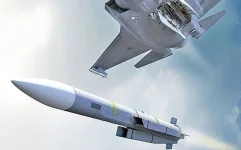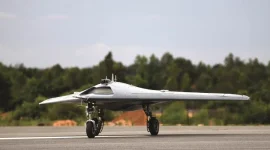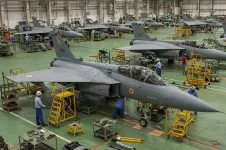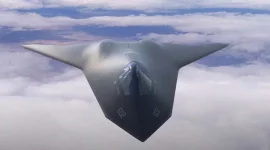- Views: 2K
- Replies: 9
In a major boost to India's aerial surveillance and strategic defence capabilities, the central government has officially approved the development of six new Airborne Early Warning and Control (AEW&C) aircraft for the Indian Air Force (IAF).
This landmark initiative, often referred to as the Netra MkII or AWACS India project, is a critical step towards achieving self-reliance in advanced military technology.
The project, with a significant financial outlay, will see the development of sophisticated surveillance aircraft designed to be the nation's "eyes in the sky."
This approval moves India into an exclusive league of countries capable of designing and manufacturing their own advanced airborne warning systems, significantly enhancing the IAF's operational readiness and surveillance network over the Indian subcontinent.
These next-generation AEW&C systems will be built on pre-owned Airbus A321 passenger aircraft acquired from Air India. The airframes will undergo extensive structural modifications by the DRDO.
The most prominent feature will be the integration of a large, static radar dome on top of the fuselage, which will house the primary radar system and enable comprehensive, 360-degree monitoring of airspace.
At the heart of the new aircraft will be a completely indigenous mission system. This includes a state-of-the-art Active Electronically Scanned Array (AESA) radar, which can detect and track multiple targets like fighter jets, drones, and cruise missiles from hundreds of kilometres away.
The platform will also be equipped with advanced electronic intelligence gathering suites, secure communication links, and data networks, allowing it to function as an integrated command and control centre in the sky.
These aircraft are considered crucial "force multipliers" for the IAF. By providing a complete and real-time picture of the battle space, they greatly enhance the situational awareness of commanders on the ground and in the air.
This capability is vital for managing fighter jet deployments, coordinating complex strike missions, and maintaining dominance over the airspace during potential conflicts.
The project is slated for completion within an ambitious timeframe of three to four years and will be spearheaded by the DRDO in close collaboration with Indian industrial partners.
The induction of these six Netra MkII platforms will more than double the IAF’s current AEW&C fleet. Presently, the Air Force operates three Israeli Phalcon AWACS, mounted on larger Russian Il-76 transport aircraft, and two smaller indigenous Netra Mk1 systems, which offer 240-degree coverage.
The new aircraft will fill a critical capability gap, providing more robust, long-range threat detection and strengthening India's overall air defence shield.




